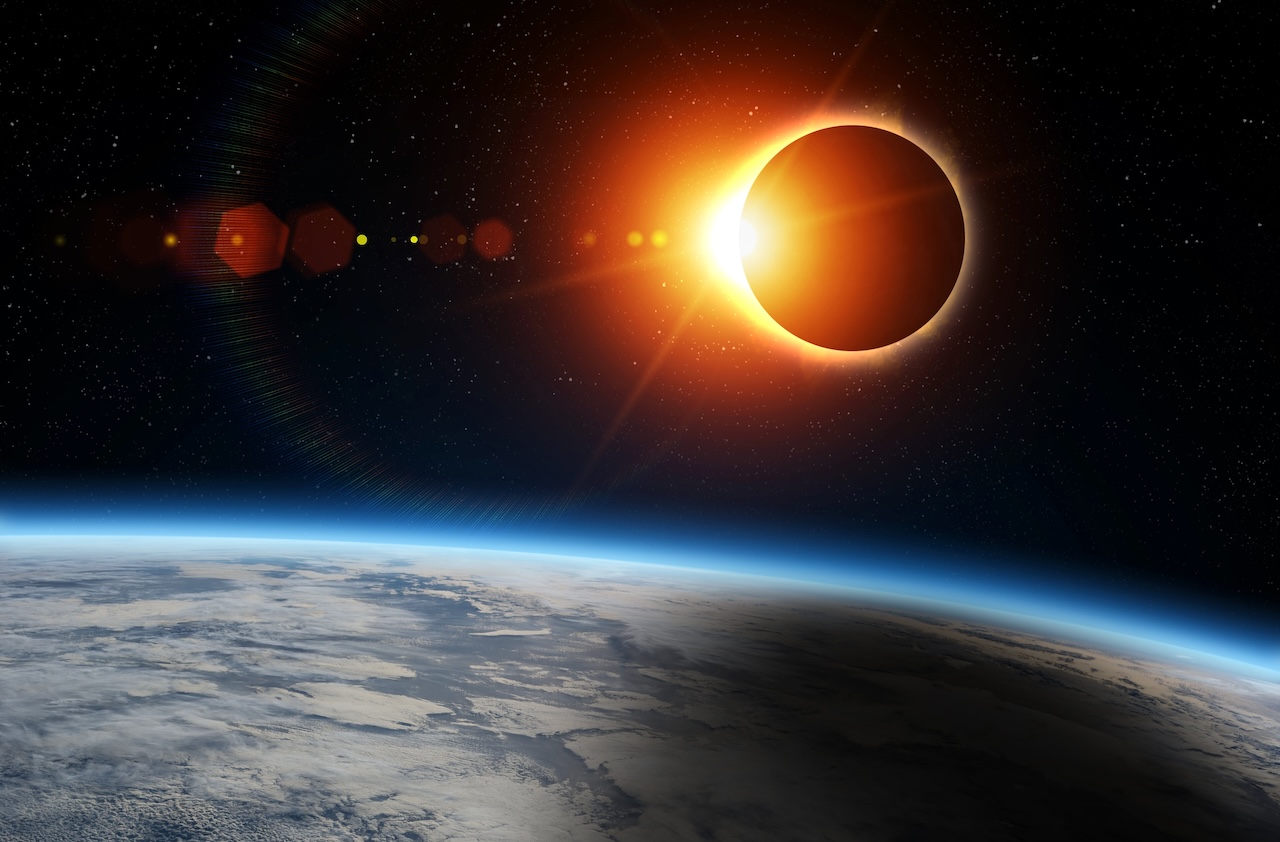Our Environment, Animal Tips & the Great Outdoors

Why is Monday’s Solar Eclipse Such a Big Deal?
There is a lot of buzz surrounding the solar eclipse on Monday, April 8. This is particularly exciting because the last time we had a total solar eclipse was in August of 2017, whereas the one before that occurred in 1979. The next total solar eclipse won’t occur until August of 2044.
This eclipse is also particularly special because it will be viewed by so many people across the United States. The path of totality for the eclipse is almost 60% wider and the duration is longer, making it a pretty unique event.
But, what is a solar eclipse? Where can we see it? And do we really have to wear the glasses? We get into it below!
What’s a solar eclipse?
A solar eclipse occurs when the sun, moon, and Earth all align. The moon passes between the Earth and the sun, temporarily blocking sunlight and casting a shadow on Earth that blocks the sun’s light in some areas.
According to NASA, solar eclipses only happen occasionally because the moon doesn’t orbit in the same plane as the sun and Earth do. The time during which they are aligned happens twice per year and is known as eclipse season.
Types of eclipses
A total solar eclipse, which is what we will be experiencing on Monday, happens when the moon passes between the sun and the Earth, completely blocking the face of the sun. People who are located at the center of the moon’s shadow when it hits Earth will experience a total eclipse, meaning the sky will darken and the temperature will drop.
“Weather permitting, people in the path of a total solar eclipse can see the sun’s corona, the outer atmosphere, which is otherwise usually obscured by the bright face of the sun,” NASA reports. “A total solar eclipse is the only type of solar eclipse where viewers can momentarily remove their eclipse glasses (which are not the same as regular sunglasses) for the brief period of time when the Moon is completely blocking the Sun.”
According to NASA, an annular solar eclipse occurs “when the moon passes between the sun and Earth, but when it is at or near its farthest point from Earth. Because the moon is farther away from Earth, it appears smaller than the sun and does not completely cover the sun. As a result, the moon appears as a dark disk on top of a larger, bright disk, creating what looks like a ring around the moon.”
A partial solar eclipse is exactly what it sounds like: it occurs when the moon passes between the sun and Earth, but the planets are not perfectly aligned, so only part of the sun appears covered.
Finally, a hybrid solar eclipse is when an eclipse shifts between annular and total as the moon’s shadow moves across the curved surface of the globe. For some, it may appear annular, and for others, it may appear to be a total eclipse.
Where can I see the eclipse?
The eclipse on April 8 will be visible to a large number of people across the United States due to the path that it is taking. The eclipse path travels through Texas, Arkansas, Illinois, Ohio, New York, Vermont, and Maine, among other states as well.
NASA reports that approximately 31.6 million people live within the path of totality, which is where the total solar eclipse will be visible. They also report that an additional 150 million people live within 200 miles of the path, meaning that they will be able to see a near-total eclipse.
In New York, the path of totality crosses over Buffalo, where the partial eclipse will begin at 2:04 p.m. and totality will occur at 3:18 p.m.
Do I really have to wear the glasses?
Unfortunately, yes.
According to NASA, it is never safe to look directly at the sun, regardless of if it is partly or mostly obscured by the moon. Eclipse glasses are required to view the solar eclipse safely and prevent serious eye damage.
Will normal sunglasses work? Again, unfortunately no.
Eclipse glasses are thousands of times darker than normal sunglasses and are made to enable wearers to look at the sun safely during these events.
During this event, however, it is safe to look at the sun with the naked eye during the view minutes of totality when the moon is completely blocking the sun.
To learn more about the solar eclipse, visit NASA’s website here. Happy eclipse viewing!


